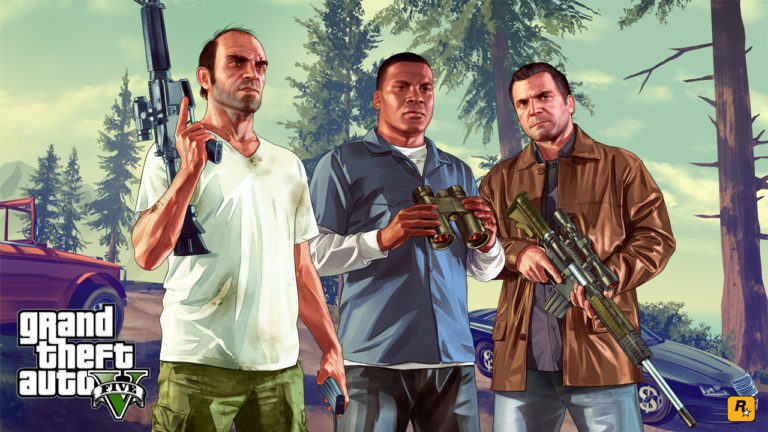A few days ago, I reached the end of Grand Theft Auto V for the second time. Like most people re-playing the game on a current-gen console, this time around, I allowed myself more time to enjoy the little things, like random kicking over of “For Sale” signs and searching the map for spaceship parts.
Like it or not, Grand Theft Auto occupies a unique place in modern culture. Rampages and lapdances may be (a super fun) part of that, but that’s not really what the games in the series have been about for a long time now. Instead, it’s GTA’s preoccupation with the pursuit of the American Dream, and most markedly, the betrayal of it (or by it) that are at the cornerstone of its storytelling.
The Grand Theft Auto series is authoritative in that funny Peter Parker way. Every open world game since its rise in popularity is measured against it. To prove their pedigree in a very competitive market, they must carve their own niche, (see Saints Row) or be distinctive enough so that the comparison is seen as irrelevant (see Sleeping Dogs).
“So, what’s left for Grand Theft Auto?” I asked myself sometime in 2013, as it became mega obvious that Rockstar Games already had my money well in advance of its fifth iteration’s release.
The answer was deceptively simple, and yet fascinating to think about. Grand Theft Auto V couldn’t be as bombastic as Saints Row IV, because believe it or not, people take GTA seriously. People expect GTA to have something to say through the violence and snarky humor.
I may enjoy shooting random stooges and stealing helicopters as much as the next gal, but I also expect Rockstar to deliver a well-thought out cultural critique of American life, dreams and the wasteland in between.
Against all odds, Rockstar actually delivered on that lofty expectation. Not only is San Andreas beautiful and hideous in its painstaking detail, but the experience of living in it as any one of the three protagonists is markedly different. They are who they are by precise design, and your living vicariously though them is a perfectly high-res reflection of who we are as GTA players.
As Michael, there’s a lot of leisure time and existential guilt. You’re a sentimental gangster who thought you would be retiring to the land of your boyhood dreams, only to find it a somewhat sad, plastic reality.
As Trevor, you’re an agent of guilt-free mayhem. As the scariest and most unstable the three, you also have the most fun, which should make you feel horrible, except it doesn’t, which is pretty horrible.
And as Franklin, well, you are the closest to be being the everyman, which the game is quick to remind you, isn’t all it’s cracked up to be, either. As Franklin, I was tasered and dropped on some train tracks for being the wrong color in the the wrong part of town. (In response, I immediately switched to Trevor and shot up some hipsters, FYI.)
Grand Theft Auto is such an effective cultural funhouse mirror, that when the game was re-released this year for current-gen consoles, Rockstar’s most marked improvement on the game was to add a first-person mode.
If you haven’t seen it, it doesn’t sound like anything dramatic, but trust me, it is. First-person mode isn’t just about showing off the much improved graphics (although that’s certainly a treat). It’s an invitation to look closer. Who are these men whose virtual bodies you inhabit for a time? In addition to being entertained, are you inspired or repulsed?
Don’t answer too quickly, because once you get past the violence and the dark, dark humor in the Grand Theft Auto mythos, all that is left is you, along with a soiled, faded, but somehow still breathing vision of the American Dream.

